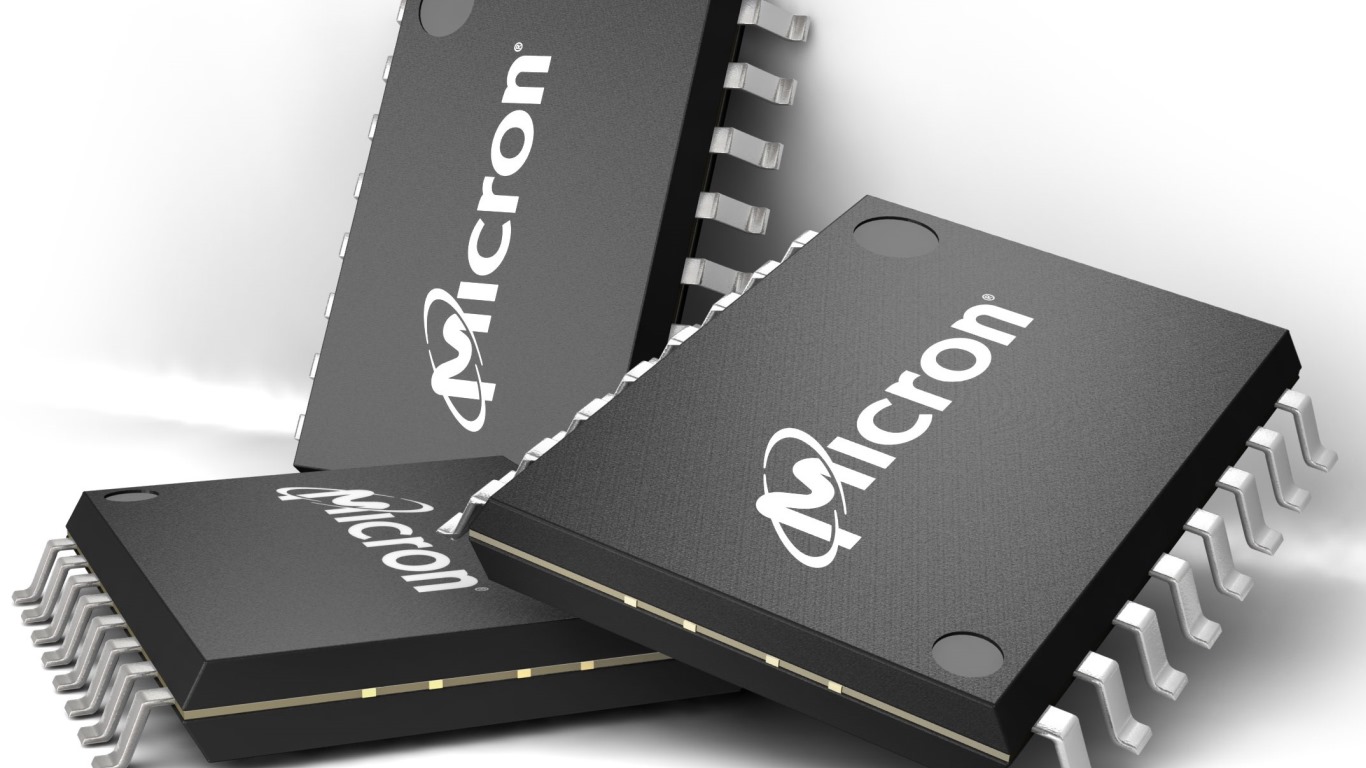
Micron Technology Inc. (NASDAQ: MU) is among the few tech companies that have an undisputed ongoing demand for their products. The COVID-19 pandemic has not tampered the need for chip-driven devices. This is unlikely to change, even if a recession begins and jobless claims and unemployment rise. In fact, the work from home economy could be a benefit
Micron’s stock has performed better than both the S&P 500 and Dow Jones industrials year to date. Chip stocks in general have done well over the past several months. Huge semiconductor providers, led by Intel Corp. (NASDAQ: INTC), have done better than the market by far.
[in-text-ad]
Micron Earnings Strong and Likely Stronger as Times Passes
The company posted strong earnings in the most recent period. Demand for PCs and servers was the primary driver. Micron said it expects demand from autos that use advanced technology. The rise of 5G technology used in mobile devices means an entirely new set of chips for smartphones worldwide.
Micron’s most recent quarterly results showed revenue was down from the year before. It came in at $4.8 billion, off from $5.8 billion, but better than expectations. Net income of $405 million was off less, down from $491 million. Operating margins were 9.2%, compared with 10.1% the year before.
President and CEO Sanjay Mehrotra pointed out that “Micron delivered solid second quarter results and revenue at the high end of the guidance range, despite the unfolding COVID-19 pandemic.” He added that he expected an increase in long-term demand for memory and storage chips. The company expects revenue in the current quarter to be between $4.6 billion and $5.2 billion.
Despite the onset of the pandemic, the company’s forecasts were strong. After the announcement, some analysts raised their price targets.
What Micron Does and How It Works
Micron’s memory chips fall into several categories. Among them are high-speed, low-powered dynamic random access memory (DRAM) chips. Graphics memory is for higher bandwidth graphics cards and gaming systems. NAND flash memory is used in mobile systems, and 5G growth should help improve that.
Micron lists as its target markets mobile, networking, servers and data centers, automotive applications and the Industrial Internet of Things (IIoT). The company’s expectation is that there will be an increase in demand across several of these, particularly the IIoT, automotive and mobile systems.
Note that DRAM chips are used in varying numbers in virtually every desktop PC, laptop and server. NAND flash memory is used in smaller devices, like thumb drives, cameras and smartphones, where its large storage capacity and ability to write and erase data quickly is a significant benefit. Solid-state drives are also big consumers of NAND flash, and the use of these for business solutions is significant.
Micron’s Stock, Long and Short Term
Micron’s shares have largely tracked the S&P 500 year to date, although in some cases it has done better. However, the ongoing demand for chips as demand for consumer electronics and industrial applications has grown has pushed the stock about 8% higher in the past year. The S&P 500 is off more than 10% in the same period.
The outperformance has been even stronger over the past five years. Micron shares are up 66% as the S&P 500 is up only 23%, a major case of overperforming.
As Global Pandemic Grows, an Optimist CEO
Mehrotra recently offered his opinion about Micron’s future and investors should be pleased:
These are unprecedented times, and I’m calling from home today. … In China, lower consumer demand was offset by stronger data-center demand due to increased gaming, e-commerce and remote work activity. Looking to the third quarter, as these trends also take shape worldwide, data-center demand in all regions look strong and is leading to supply shortages.
Working from home was a critical clue. He spoke to the need for remote devices, whether it is laptops, education from home or cloud computing. These will keep demand for Micron products strong, despite falling demand for many other tech products.
Mehrotra is right about his company’s fate. It is, for good or bad, tied to the current pandemic.
Thank you for reading! Have some feedback for us?
Contact the 24/7 Wall St. editorial team.

 24/7 Wall St.
24/7 Wall St.



